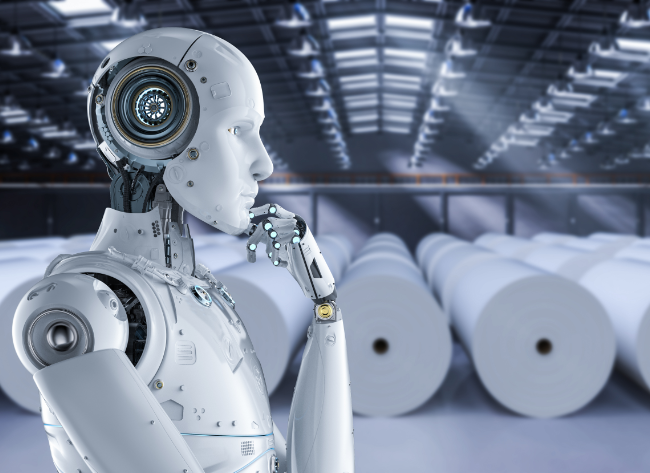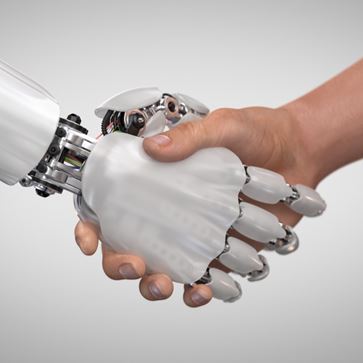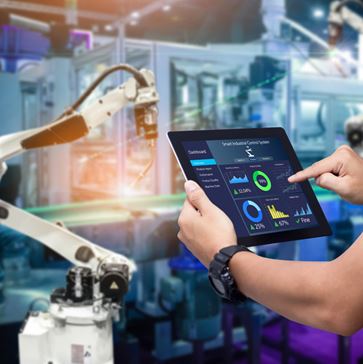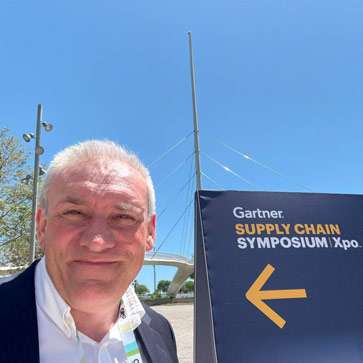
Supply chain planning language for robots (and humans)
Ioana Simon - November 9, 2020

The world of supply chain planning sometimes appears to us as a vast, ever-changing field of knowledge, with new concepts being introduced constantly. Recent additions to the vocabulary are terms like ‘telescopic digital twin’, ‘agile planning’, ‘resilient planning’, and ‘XAI’. But what do they mean? As a mathematician, I’m a big fan of clear definitions and simple examples to illustrate complex terms, and that’s what I’ll try to do here.
The first thing that should probably be clarified is that none of these terms refer to any specific technology. There isn’t one single algorithm behind XAI, for example, or one specific technology that generates resilient planning. They should rather be seen as underlying philosophies when it comes to the choice and design of planning technologies.
A digital supply chain twin
So, let’s say you are building a robot sidekick to help you manage your supply chain. After you’ve given it a cute face, little wheels to roll around on, and a good friend’s name like Ann, the first thing you might do is explain to it what your supply chain looks like. For that, your robot is going to need a digital supply chain twin. Gartner defines this as the following: “A ‘digital supply chain twin’ is a digital representation of the physical supply chain that can be used to create plans and make decisions”.* That means that inside the mighty robot brain, you’re going to construct a mental image of your supply chain, including all your plants, machines, transport lanes, as well as detailing how they interact and fit together.
Zooming in and out
Blog post
But what makes a digital twin telescopic? If your robot is equipped with a telescopic digital twin, she can put information into context. For example, let’s say you’re asking Ann for her opinion on whether to open a plant in Pawnee, Indiana. She will then be able to look at the “big picture” of your supply chain and whether this decision makes sense, rather than getting caught up in the details.
Similarly, when you’re making decisions on a more detailed level, like the sequence of tasks on a machine for a given day, the telescopic digital twin allows Ann to zoom in on the information that is relevant to that decision. In practice, at OMP, this is done by modeling the supply chain using multiple interlinking digital twins corresponding to different planning layers and decision-making scopes.

Blog post
Adapting itself
Blog post

Ann also always needs to be able to see all the changes in your supply chain. As Gartner puts it: “Any digital twin must be synchronized with the real world to be a twin, rather than just a model.”* This ties in with the concept of agile planning. Agility in planning refers to how easily changes to the supply chain can be picked up by the digital twin. If you tell Ann that you are adding a machine to one of your plants you don’t want her to say: “Hold up, that wasn’t there when you first explained the layout to me. Could you please explain your whole supply chain to me again?” Instead, you want her to quickly adapt the digital twin.
Some planning systems take this concept even further, allowing the system to dynamically detect inaccuracies in the digital twin and suggest appropriate changes to the model. At OMP our continuous data improvement track, also called Data Genie, is a digital twin that adapts itself to fit the data more accurately. For example, it uses machine learning techniques to calculate and change machine rates based on production data.
Blog post
Avoiding disruptions
Now that Ann knows what your supply chain looks like, you want her to make suggestions on what planning decisions you should take. For that, you equip her with smart solver algorithms and AI technology. Resilient planning means that these algorithms are designed in such a way that disruptions to the supply chain or unexpected changes don’t have a massive effect on the resulting plan. In our example, this basically makes sure Ann isn’t too skittish, and that she doesn’t want to completely overhaul her plan once something unexpected happens. In practice, this is achieved using a combination of forecasting and data analysis methods to try to predict these disruptions as well as allowing the algorithm to place buffers to dampen their effects.
Making humans understand
Blog post
Let’s say Ann has computed an optimal, resilient plan - for example, she tells you that you should open that plant in Pawnee. You might wonder how she got to that conclusion. When you ask her, you don’t want her to reply “Cause. Just trust me.” This is where XAI comes in. An acronym for explainable artificial intelligence, XAI is the idea that advanced algorithms should come with a set of tools that allow them to explain themselves. Ann could do this, for example, by putting the abstract calculations of her algorithms back into the decision-making context that you understand.
This also shows how interconnected these ideas are. For XAI to work, the system needs to be aware of the planning scope and context, therefore it needs to have a telescopic digital twin. For the plan to be resilient, the underlying digital twin needs to be agile. Each of these concepts needs to be kept in mind when designing an effective system, to make sure it can be the sidekick you deserve. The Robin to your Batman, the KITT to your Knight Rider, the Ann to your Leslie.

Blog post

Ioana Simon
Supply Chain Consultant
Biography
Ioana is a consultant in the Solver team. There, she primarily works on the advanced S&OP solver and collaborates closely with project teams to ensure customers get the most out of OMP’s vast solver offering. She is passionate about mathematics and dislikes writing her own biography.





